Fleas in Cats
 The most common flea found on cats and dogs is the cat flea (Ctenocephalides felis). While many animals can live with fleas with minimal signs of itch or discomfort, control of fleas is advisable for many reasons:
The most common flea found on cats and dogs is the cat flea (Ctenocephalides felis). While many animals can live with fleas with minimal signs of itch or discomfort, control of fleas is advisable for many reasons:
– Fleas can carry the larval stage of the tapeworm which can infect your pet if they ingest the flea during grooming
– Adult fleas feed on blood – in young cats this can lead to weakness, anaemia and even death
– Some cats develop an allergy to flea bites which causes them to develop skin diseases
– Fleas can cause itchy bites to humans, usually around their ankles
– Fleas can transmit infections between animals
How to tell if your pet has fleas:
The best way to check if your pet has fleas is to comb their coat out with a fine tooth ‘flea comb’ over a clean white surface so that any fleas or ‘flea dirt’ (flea faeces is digested blood) will fall onto the surface.
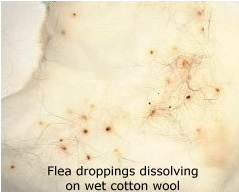
Flea dirt on wet cotton wool
Place any debris onto damp cotton wool – if there is flea dirt present they will dissolve slowly giving red-brown ‘halos’ around the debris. If you find these it means your pet has fleas even if you can’t find an adult flea.
Tackling Fleas:
Regular treatment of all pets with an insecticide to kill adult fleas will prevent a flea infestation. This usually involves a spot-on treatment applied monthly/bimonthly or there is a spot—on treatment available for cats called Bravecto which will last 3 months – please contact us at the clinic for more information.
If you have a flea infestation:
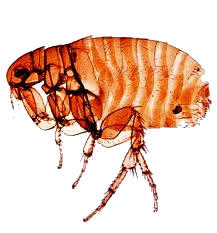 1. Treat ALL pets with an effective treatment to kill adult fleas
1. Treat ALL pets with an effective treatment to kill adult fleas
2. Regular vacuum cleaning of all carpets and furnishings will reduce, but not eliminate, flea numbers
3. Wash all bedding above 60 degrees or dispose of it
4. Use an environmental spray containing an insect growth regulator to kill eggs and larvae that are developing in the house. Pupae are extremely difficult to kill and will continue to hatch out for several weeks until their population is depleted (It is therefore normal to see fleas on your pet after treatment as new adult fleas continue to hatch out from pupae in the environment – these new fleas will be killed within 24 hours of contact with your treated pet.
5. Allow treated pets access to all infested areas (areas which they were previously allowed). This will encourage the pupae to hatch out and the new adult fleas will be killed by your pet.
In some situations it may take several weeks and even months to fully control a flea problem. Please contact us at the clinic for more information and advice.
See below for more information on the treatment options available for parasite prevention in your cat
CATS: WORMING AND FLEA TREATMENT OPTIONS*:
1. Milbemax/Milpro: Tablet is a complete wormer – covers all types of intestinal worms
2. Stronghold: Spot-on treatment which covers fleas, ear mites, lice, roundworms and hookworms. (NOT tapeworm)
3. Advocate: Spot-on treatment which covers fleas, ear mites, roundworms and hookworms and lungworm
4. Advantage: Spot-on treatment which covers fleas only
5. Frontline: (a) Spot on treatment which covers fleas and ticks
(b) Spray (most cost effective but can be difficult to apply!)
6. Broadline: Spot-on treatment which covers fleas and ticks, and is a complete wormer
7. Panacur: Powder or liquid form which covers roundworm, hookworm and some types of tapeworm. This is the only wormer which treats lungworm.
8. Bravecto: Spot-on treatment which covers fleas and ticks and lasts 3 months*These are the products we keep and recommend in our clinic
WHICH PRODUCT AND HOW OFTEN TO USE?
The answer depends on your cat’s lifestyle:
1. INDOOR CATS:
• Worm every 6 months
• Apply flea treatment if going into cattery
• Can use oral tablet (milpro/milbemax) or if you can’t give a tablet we recommend Broadline which contains a complete wormer
2. INDOOR/OUTDOOR CATS (May hunt occasionally)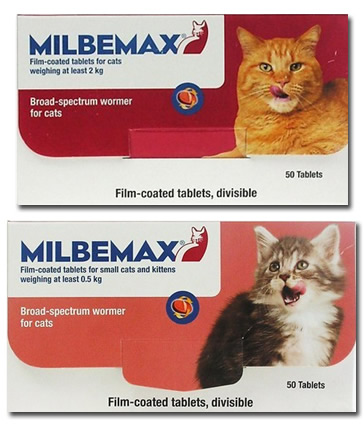 • Worm every 3 months
• Worm every 3 months
• Flea treatment monthly especially in Spring and Summer (N.B. If cat picks up 1 or 2 fleas at the start of colder months they will happily live and multiply in a centrally heated home!!)
• Can use oral tablet (milpro/milbemax) every 3 months and a spot-on flea treatment (advantage/frontline) monthly or Bravecto spot-on every 3 months
or
• Can use Broadline spot-on every 3 months with just a flea treatment (advantage/frontline) monthly in between
3. OUTDOOR CATS (Avid hunters)
• Worm every 1-2 months, consider worming monthly in Spring and Summer when hunting more
• Flea treatment monthly especially in Spring and Summer
• Can use oral tablet to worm (milpro/milbemax) and separate flea treatment (frontline/advantage) monthly
or
• Can use Broadline spot-on treatment monthly
 Vaccinations contain a harmless form of the virus or bacterium that causes a particular disease.
Vaccinations contain a harmless form of the virus or bacterium that causes a particular disease.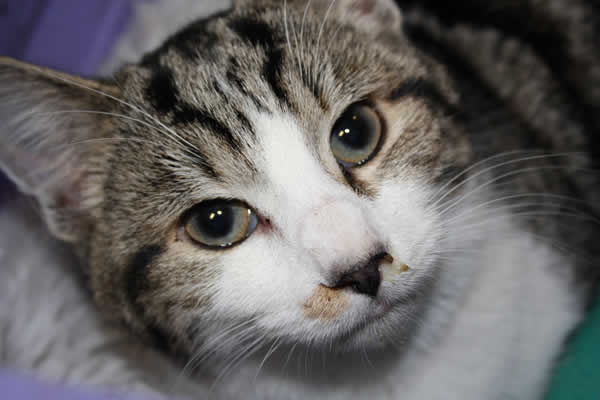 Catflu causes similar signs to human flu – sneezing, watery eyes, runny nose, loss of appetite, mouth ulcers and can sometimes cause pneumonia. They can be left with lifelong health problems including chronic sinusitis, dental disease and recurrent eye inflammation.
Catflu causes similar signs to human flu – sneezing, watery eyes, runny nose, loss of appetite, mouth ulcers and can sometimes cause pneumonia. They can be left with lifelong health problems including chronic sinusitis, dental disease and recurrent eye inflammation. Cats commonly harbour both roundworms and tapeworms. Most infected cats do not show signs of having worms; however heavy burdens of worms can cause weight loss, vomiting and diarrhoea, and failure to thrive.
It is also important to be aware some worms can be passed to humans (children in particular are at risk) and on rare occasions can cause serious disease in people. For these reasons, regular treatment of cats to prevent or eliminate worms is very important.
Cats commonly harbour both roundworms and tapeworms. Most infected cats do not show signs of having worms; however heavy burdens of worms can cause weight loss, vomiting and diarrhoea, and failure to thrive.
It is also important to be aware some worms can be passed to humans (children in particular are at risk) and on rare occasions can cause serious disease in people. For these reasons, regular treatment of cats to prevent or eliminate worms is very important.
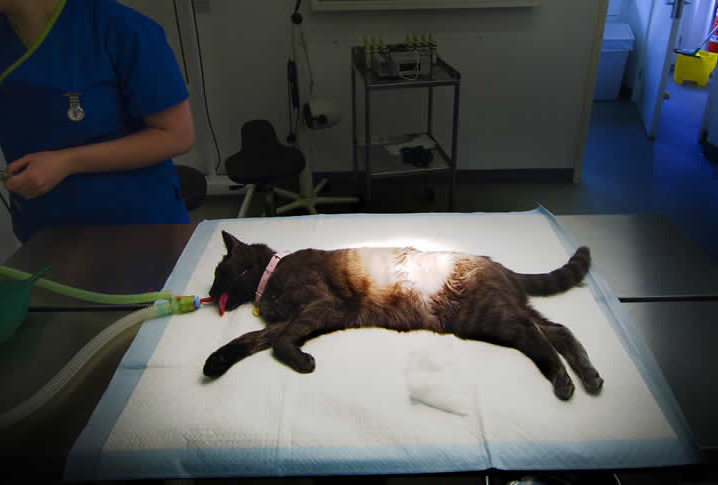 Neutering a female animal is referred to as spaying. Spaying or ovariohysterectomy involves removal of the womb and ovaries to prevent ‘heats’ and unwanted pregnancies
Neutering a female animal is referred to as spaying. Spaying or ovariohysterectomy involves removal of the womb and ovaries to prevent ‘heats’ and unwanted pregnancies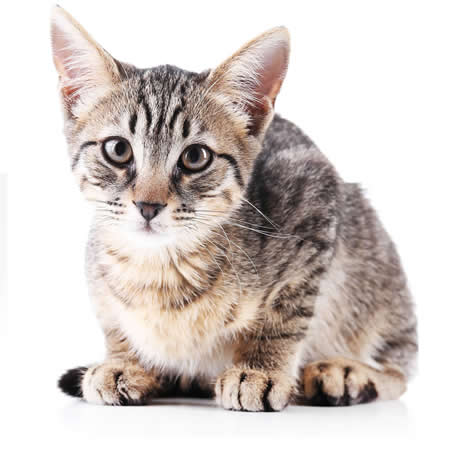 • Control of nuisance. Unneutered male cats are likely to stray over a large area, will mark their territory with a very pungent spray and are much more likely to fight – which can be very noisy!
• Control of nuisance. Unneutered male cats are likely to stray over a large area, will mark their territory with a very pungent spray and are much more likely to fight – which can be very noisy!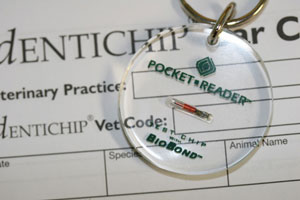 This number can be read by a scanner. The microchip is injected through a sterile needle under the pet’s skin between the shoulder blades.
This number can be read by a scanner. The microchip is injected through a sterile needle under the pet’s skin between the shoulder blades. When buying your pet insurance, take the time to choose the right policy because if you buy the wrong policy it can be very difficult to change to a better product later on. Here’s how to choose the right policy:
When buying your pet insurance, take the time to choose the right policy because if you buy the wrong policy it can be very difficult to change to a better product later on. Here’s how to choose the right policy: They can easily become bored and frustrated filling the void of activity with sleeping, grooming and eating. This sedentary lifestyle leads to health problems such as urinary tract disease, over-grooming and eating disorders.
They can easily become bored and frustrated filling the void of activity with sleeping, grooming and eating. This sedentary lifestyle leads to health problems such as urinary tract disease, over-grooming and eating disorders. Most owners provide water beside the food bowl. However cats naturally hunt for food and water separately and the presence of water near the food can actually deter some cats from drinking sufficent amounts of water especially if they are on a dry diet.
Most owners provide water beside the food bowl. However cats naturally hunt for food and water separately and the presence of water near the food can actually deter some cats from drinking sufficent amounts of water especially if they are on a dry diet. This provides a tremendous sense of security and enables your cat to sleep deeply in the knowledge that it is safe. If your bedroom does become an important resource however it can also be a place of conflict if you have a multi-cat household as individuals compete for the best spot.
This provides a tremendous sense of security and enables your cat to sleep deeply in the knowledge that it is safe. If your bedroom does become an important resource however it can also be a place of conflict if you have a multi-cat household as individuals compete for the best spot. Scratch posts are most attractive if you place it near a window or radiator in a room your cat particularly likes to spend time.
Scratch posts are most attractive if you place it near a window or radiator in a room your cat particularly likes to spend time. These problems can be minimised by providing plenty of resources in the home and keeping an appropriate number of cats for the size of the house. See section below on multi cat households and how to minimise problems
These problems can be minimised by providing plenty of resources in the home and keeping an appropriate number of cats for the size of the house. See section below on multi cat households and how to minimise problems Toys that move randomly are great; those that are motionless and left lying around soon become predictable and boring.
Toys that move randomly are great; those that are motionless and left lying around soon become predictable and boring.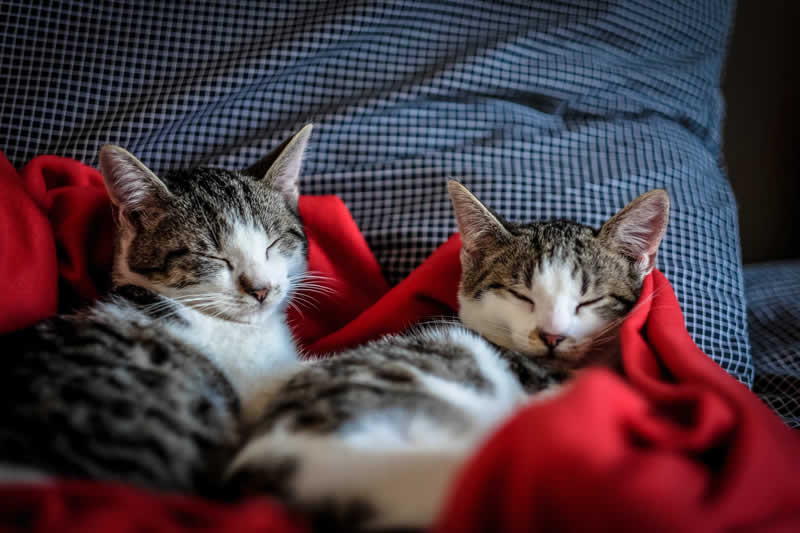 Siblings that have been brought up together often represent the best pairings, particularly if there was evidence of sociability with each other as kittens and their temperaments remain complementary, for example, probably not one very confident kitten with one very shy one.
Siblings that have been brought up together often represent the best pairings, particularly if there was evidence of sociability with each other as kittens and their temperaments remain complementary, for example, probably not one very confident kitten with one very shy one. Cats will eliminate when and where they feel safe, away from feeding and hunting areas. Some cats prefer to eliminate outside but many, given the choice, would use indoor facilities.
Cats will eliminate when and where they feel safe, away from feeding and hunting areas. Some cats prefer to eliminate outside but many, given the choice, would use indoor facilities.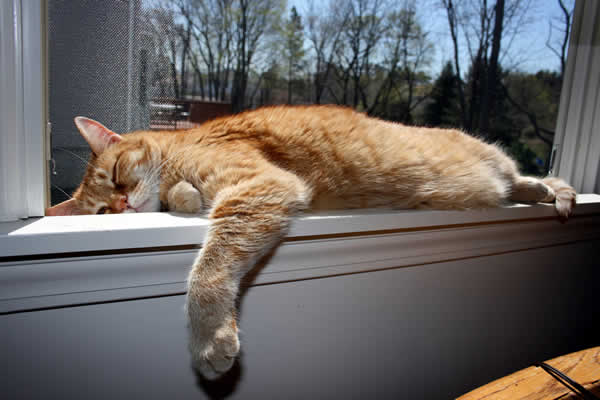 Providing high perches throughout the house, for example:
Providing high perches throughout the house, for example: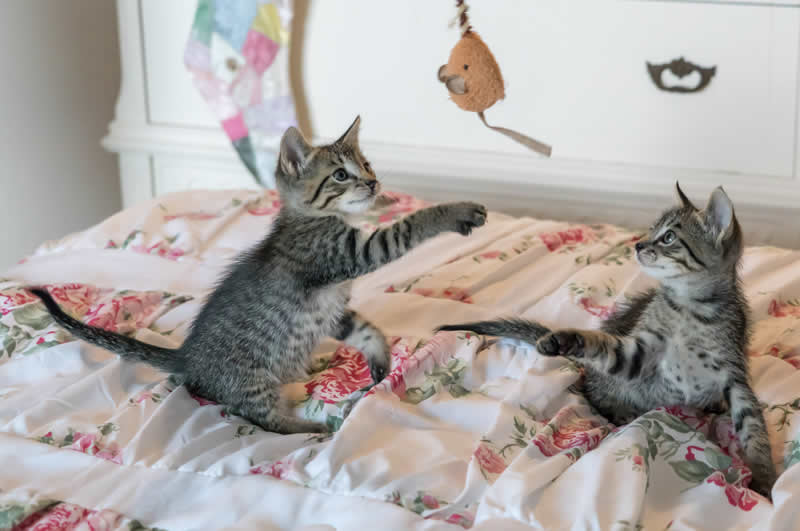 Play is considered a leisure activity by cats and insecure individuals will not play in front of a more confident cat. It is however an important and positive behaviour but in multi-cat households play, particularly play fighting, can escalate into something more antagonistic.
Play is considered a leisure activity by cats and insecure individuals will not play in front of a more confident cat. It is however an important and positive behaviour but in multi-cat households play, particularly play fighting, can escalate into something more antagonistic. The goal is for your cat to learn to associate the carrier with positive experiences and routinely enter voluntarily.
The goal is for your cat to learn to associate the carrier with positive experiences and routinely enter voluntarily.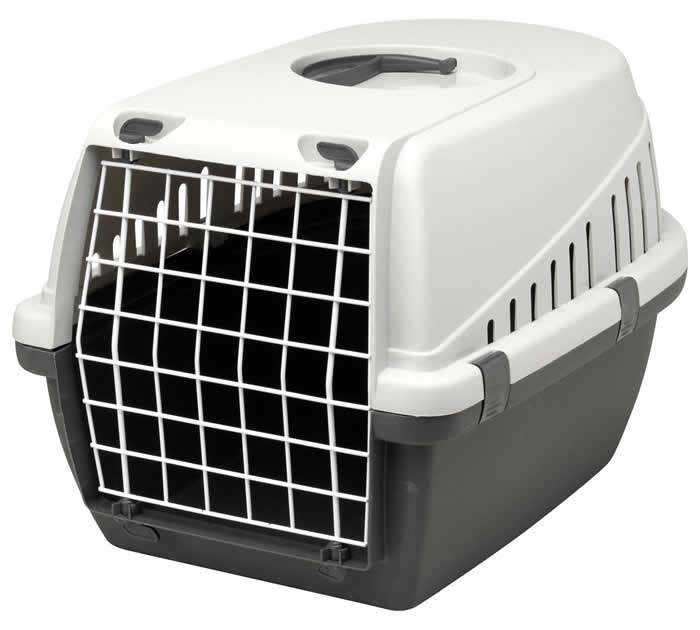 The best carriers are inexpensive hard sided carriers that open from the top and the front, and can also be taken apart in the middle. An easily removable top allows a cat which is fearful to stay in the bottom half of the carrier for exams.
The best carriers are inexpensive hard sided carriers that open from the top and the front, and can also be taken apart in the middle. An easily removable top allows a cat which is fearful to stay in the bottom half of the carrier for exams.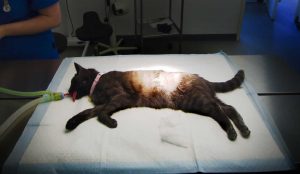 In the waiting room cages should be placed on the benches or counter, not on the floor so that your pet feels safer. We will weigh your pet and we will ask you to fill in a consent form for the procedure.
In the waiting room cages should be placed on the benches or counter, not on the floor so that your pet feels safer. We will weigh your pet and we will ask you to fill in a consent form for the procedure.